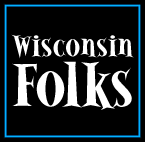|
Home | Search | The Artists | Teaching | Hiring | About This Site | Contact Us |
||
|
This is the text of Christine Okerlund talking about how she pulls quills out of a porcupine, recorded in 1998, in Washington, D.C. Christine: If I see a road kill, Iíll hit the breaks and turn around. Pick him up by the hid foot and he comes home with me. Narrator: Christine creates birchbark baskets, adorned with porcupine quills. Christine: People just know that I use them, so they bring them over to my house. Festival attendant: You take the hide off, is that what you do? I mean, how do you get them off is what Iím asking. Christine: I put on a glove and once you clear a spot in there, itís really easy to just get big clumps out. I put them in the pot and some dish soap and boil íem for a little while. Clean them and then sanitize them. This is a traditional art form around the Great Lakes, woodland tribe, Ojibwe, Chippewa. From the white birch tree. I take my knife as high as I can reach, and Iíll split it, being very careful not to get into the inner part of the trees, just that outer layer. This is sweetgrass which I use to ornament the edges. Iíll sew the bottom part and then wrap the sweetgrass around that or put porcupine quills around it like that one. This is a tee-pee. I make a lot of designs for the Native American church for ceremonial uses. This is a trillium. They grow naturally in our woods. They come out white in the spring time and then theyíll turn pink. Before they dye, theyíre a purple. I always liked to embroider, so it came very easily to me. Festival attendant: What lovely work! Enjoy your time in Washington.
|
|
|
|
Home | Search | The Artists | Teaching | Hiring | About This Site | Contact Us |
||
